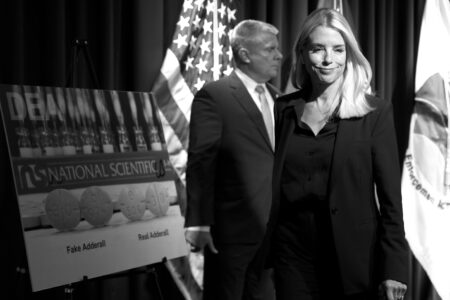Cities seek to loosen rules on spending federal pandemic aid

Birds fly past a bridge connecting the Oceanside pier to Pacific Street Friday, Oct. 15, 2021, in Oceanside, Calif. The iconic bridge is deteriorating because the city lacks the money for a roughly $25 million rehabilitation. One reason the project has slowed while projects in other cities are moving ahead revolves around the American Rescue Plan — the sweeping COVID-19 relief law championed by President Joe Biden and congressional Democrats that is pumping billions of dollars to states and local governments. (AP Photo/Gregory Bull)
By DAVID A. LIEB
Associated Press
At the Loma Verde Recreation Center south of San Diego, demolition work is underway on a $24 million project that will rebuild the facility from the ground up, complete with a new pool. An hour’s drive to the north, the iconic bridge to the Oceanside pier is deteriorating because the city lacks the money for a roughly $25 million rehabilitation.
A reason one project is moving ahead and the other isn’t revolves around the American Rescue Plan — the sweeping COVID-19 relief law championed by President Joe Biden and congressional Democrats that is pumping billions of dollars to states and local governments.
Under rules developed by the U.S. Treasury Department, some governments have more flexibility than others to spend their share of the money as they want. That’s why the new swimming pool is a go, and the rehabbed pier — at least for now — is a no.
Similar disparities among cities across the country have prompted a pushback from local officials, who want Treasury to loosen its rules before the program progresses much further.
“Otherwise, they are penalizing cities for the pandemic, not providing them relief,” said Wade Kapszukiewicz, the mayor of Toledo, Ohio.
At issue is $350 billion for states, counties and cities that was part of the massive COVID-19 relief bill Biden signed in March. The money is intended to help shore up their finances, pay the ongoing costs of fighting the virus and invest in longer-term projects that could strengthen communities for years to come.
The funding was made available by the Treasury beginning in May — though states and cities have been slow to start spending it.
The Treasury’s guidelines give governments leeway to choose from more than 60 subcategories for spending the money, including COVID-19 vaccinations, premium pay for certain workers, housing aid, grants to businesses and improvements to water, sewer and internet infrastructure.
But one particular category stands out for its flexibility. Governments that lost revenue can use their federal aid for almost any services, up to the amount of their losses. That means they can spend the money on roads, a recreation center or a pier, which might not otherwise be eligible.
Treasury spokesperson Liz Bourgeois said the plan gives governments “the resources and flexibility they need to avoid cuts, hire or retain workers, provide essential services, and come out of the pandemic stronger.” Democratic congressional leaders also have praised the Treasury’s flexible guidance.
But some local officials think the Treasury’s formula for calculating lost revenue is too restrictive. It rolls most revenue sources together instead of calculating losses on a fund-by-fund basis, which would let governments claim losses in dedicated funds such as gas taxes for roads even if other revenue grew. Local governments also want to exclude recently enacted tax hikes from the calculation, which they contend masks the depth of their losses during the pandemic.
In Toledo, voters last November approved a temporary one-quarter percent income tax increase that is projected to raise $19 million annually for roads.
As a result, that revenue will offset other losses under the Treasury’s calculation, meaning the city won’t have the flexibility to use relief money to replace old police vehicles, Kapszukiewicz said.
“It now falsely looks like our economy has recovered more than it has, when in reality, it merely reflects the revenue produced by putting an extra burden on ourselves,” the mayor said.
“It’s absurd.”
In California, more than 250 cities and counties enacted voter-approved tax increases since 2018 — most coming during or after the 2018-19 fiscal year that forms the basis for calculating revenue loss, according to an analysis conducted for The Associated Press by government finance consultant Michael Coleman.
The southern San Diego suburb of Chula Vista, which did not enact new taxes, calculated revenue losses of more than $32 million under the Treasury’s guidelines — covering over half its $57.5 million allotment under the American Rescue Plan.



